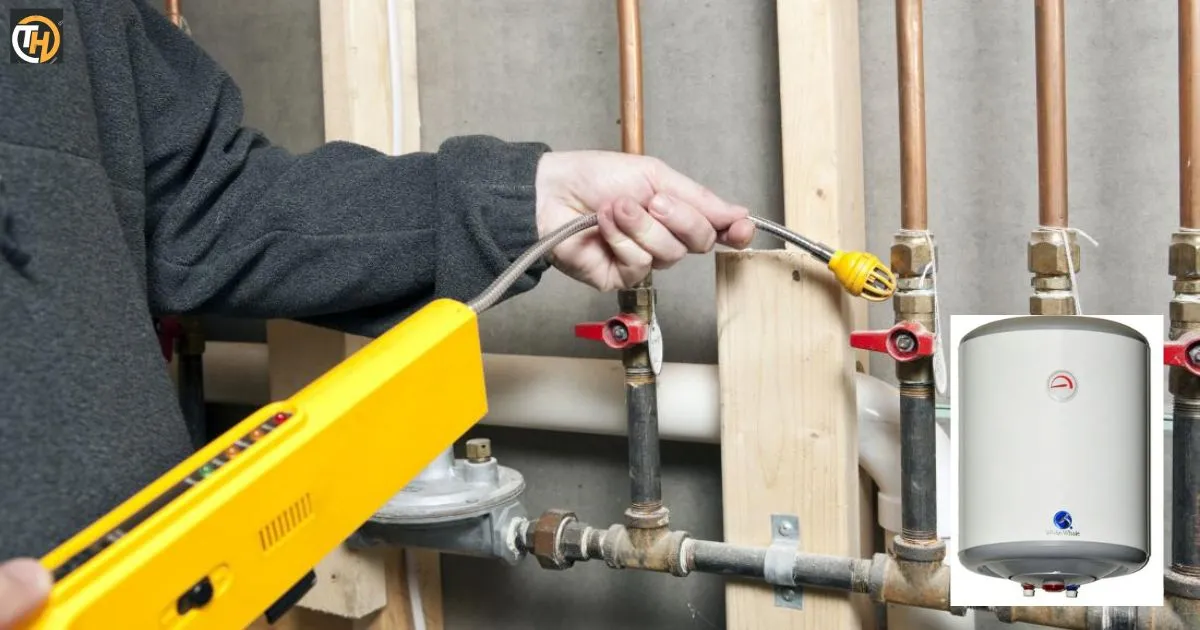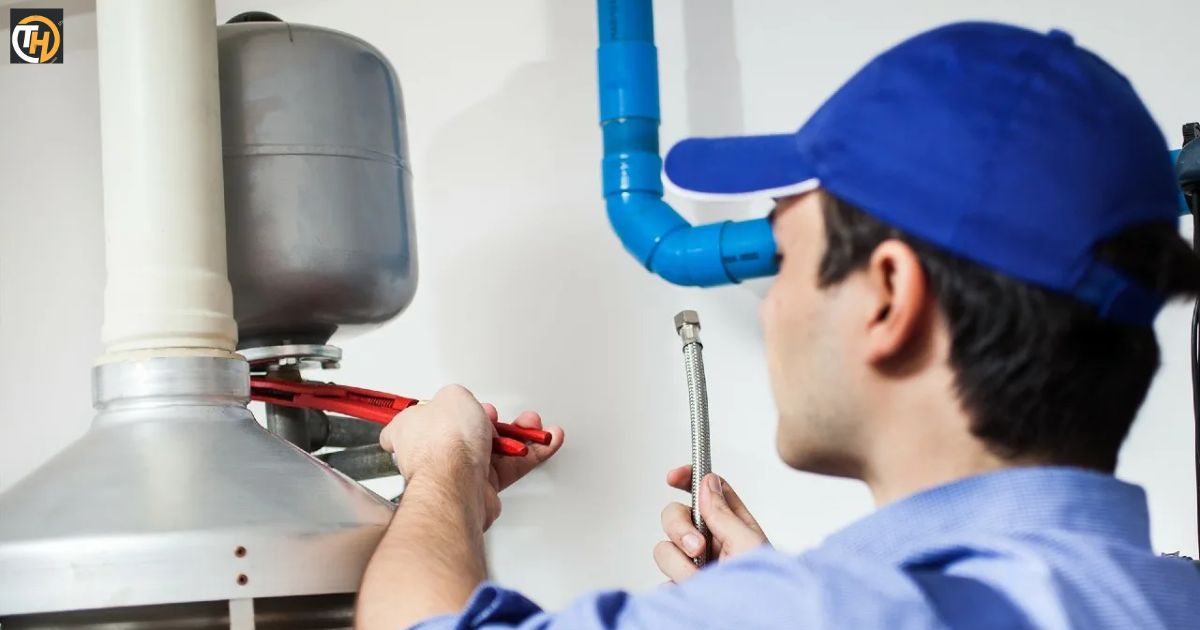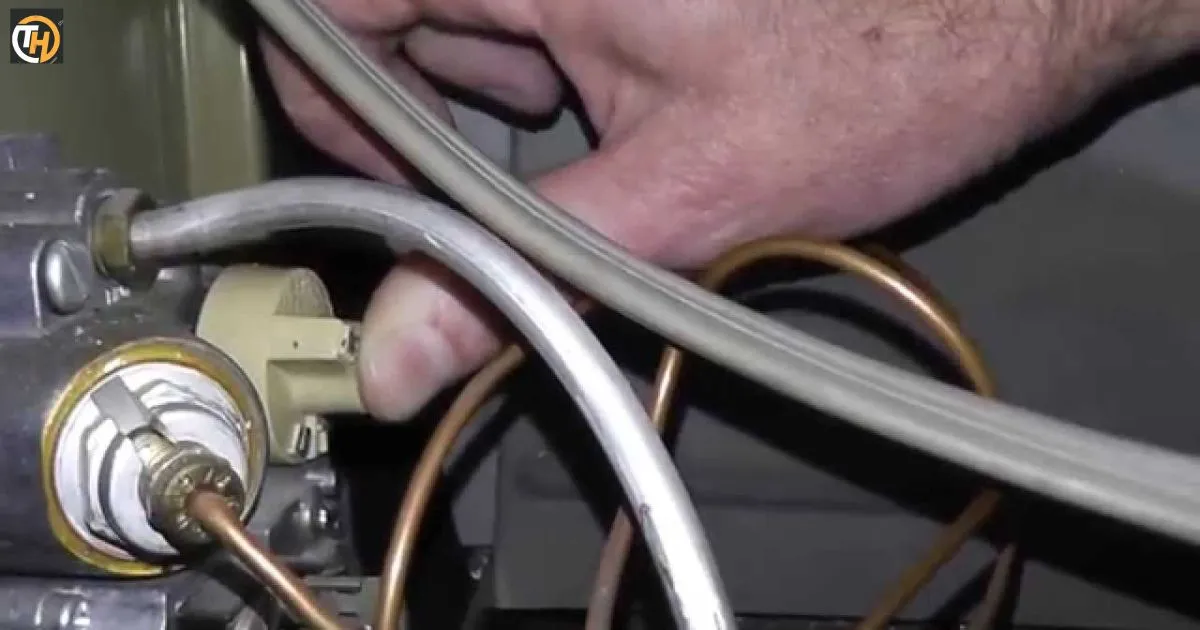The process to purge air from the gas line of a water heater is an essential maintenance task that ensures the efficient operation of your appliance. Air in the gas line can cause the water heater to run inefficiently, or not at all, as it prevents the proper flow of gas to the burner.
The process of purging air from the gas line involves releasing the trapped air and allowing gas to flow freely. This might sound like a daunting task, but with the right knowledge and precautions, it can be done safely and effectively.
In this guide, we will provide step-by-step instructions on how to purge air from the gas line on your water heater. By following these steps, you can ensure your water heater operates efficiently and safely.
Understanding the Importance of Purging Air from Gas Line
Purging air from the gas line of a water heater is a critical maintenance task that ensures the efficient operation of your appliance. Air in the gas line can prevent the proper flow of gas to the burner, causing the water heater to run inefficiently or not at all. By purging the air, you can ensure a steady flow of gas, allowing your water heater to function optimally.
The Role of Gas in Water Heaters
Gas plays a crucial role in the operation of water heaters. It is the primary fuel source that is burned to heat the water. When you turn on a hot water tap, the gas burner is activated, and it heats the water in the tank. The heated water then travels through the pipes to your tap. If there is air in the gas line, it can disrupt this process by preventing the gas from reaching the burner.
Consequences of Air in the Gas Line
Air in the gas line can have several negative consequences. First, it can cause the water heater to run inefficiently. Since the gas won’t flow properly, the burner may not receive enough fuel to heat the water to the desired temperature. This can result in lukewarm or even cold water coming out of your hot water taps. Purge air from the gas line on the water heater is crucial to ensure optimal performance and avoid these issues.
Identifying the Presence of Air in the Gas Line
Identifying the presence of air in the gas line is the first step toward resolving the issue. This involves being aware of the symptoms that indicate air in the gas line and confirming its presence.
Symptoms of Air in the Gas Line

The symptoms of air in the gas line can vary, but there are a few common signs to look out for. These include:
- Inconsistent heating: If your water heater is not heating water consistently, it could be due to air in the gas line. You might notice that the water temperature fluctuates or doesn’t get as hot as it should.
- Pilot light issues: The pilot light might go out frequently or fail to light at all. This could be because the air in the gas line is preventing the gas from reaching the pilot light.
- Unusual noises: You might hear popping or banging noises from your water heater. These noises can occur when the air in the gas line interrupts the flow of gas, causing mini explosions when the gas ignites.
Confirming the Presence of Air
If you notice any of these symptoms, the next step is to confirm the presence of air in the gas line. This usually involves checking the gas line for air bubbles. You can do this by turning off the gas supply, disconnecting the gas line from the water heater, and then, in the middle of this process, carefully purge air from the gas line. Slowly turn the gas supply back on while observing for bubbles in a bowl of soapy water placed over the end of the gas line.
Safety Precautions Before Purging Air
Before you start the process of purging air from the gas line, it’s important to take some safety precautions.
Necessary Safety Equipment
You should have the following safety equipment on hand:
- Safety glasses: These will protect your eyes from any gas that might escape while you’re purging the air.
- Gloves: These will protect your hands from any sharp edges on the gas line or water heater.
- Fire extinguisher: This is a crucial safety tool to have on hand whenever you’re working with gas appliances.
Safe Environment Setup
In addition to having the right safety equipment, you should also ensure that your work environment is safe. This means working in a well-ventilated area away from open flames or sparks. You should also inform others in the area of what you’re doing so they can stay clear of the work area.
Tools Required for Purging Air from Gas Line
Having the right tools can make the process of purging air from the gas line much easier.
Essential Tools for the Task
The essential tools for this task include:
- Wrench: This will be used to disconnect and reconnect the gas line.
- Soapy water: This will be used to check for air bubbles in the gas line.
- Bowl: This will hold the soapy water.
Step-by-Step Guide to Purge Air from Gas Line
Purging air from the gas line involves a series of steps that need to be followed carefully to ensure safety and effectiveness.
Preparing the Water Heater
Before you start the purging process, you need to prepare the water heater. This involves turning off the gas supply to the water heater and disconnecting the gas line. You should also ensure that the water heater is cool to the touch to prevent burns.
The Purging Process
The purging process involves releasing the trapped air and allowing gas leaking to flow freely. This is done by slowly opening the gas supply while the end of the gas line is submerged in a bowl of soapy water. The escaping air will create bubbles in the water. Once the bubbles stop, this indicates that all the air has been purged and the gas is flowing freely.
Troubleshooting Common Issues During Air Purging
During the purging process, you might encounter some issues that need to be addressed.
Dealing with Persistent Air Pockets
If you notice that the bubbles in the soapy water don’t stop, this could indicate a persistent air pocket. In this case, you might need to repeat the purging process a few times until all the air is removed.
Addressing Gas Flow Issues
If the gas doesn’t seem to be flowing freely even after purging the air, there could be an issue with the gas supply. This could be due to a blockage in the gas line or a problem with the gas supply itself.
Post-Purging Steps for Water Heater
Once you’ve successfully purged the air from the gas line, there are a few post-purging steps you need to follow.
Checking the Functionality of Water Heater
After reconnecting the gas line and turning the gas supply back on, you should check the functionality of the water heater. This involves lighting the pilot light and observing the burner to ensure it’s working properly.
Cleaning and Maintenance After Purging
After the purging process, it’s a good idea to clean the area around the water heater and perform any necessary maintenance. This could involve cleaning the burner, checking the venting system, and inspecting the water heater for any signs of damage or wear.
Professional Help for Air Purging

While purging air from the gas line is something you can do yourself, there might be situations where you need professional help.
When to Seek Professional Help
If you’re not comfortable performing the purging process yourself, or if you encounter issues that you can’t resolve, it’s best to seek professional help. A professional can safely and effectively purge the air from the gas line and address any issues.
Choosing the Right Professional Service
When choosing a professional service, look for one that has experience with water heaters and gas lines. You should also check reviews and ask for recommendations to ensure you choose a reputable service.
Preventive Measures to Avoid Air in Gas Lines
While it’s important to know how to purge air from the gas line, it’s even better to prevent air from getting in the gas line in the first place.
Regular Maintenance and Inspection
Regular maintenance and inspection of your water heater and gas line can help prevent air from getting in the gas line. This involves checking the gas line for leaks and ensuring the connections are tight.
Quality of Gas Supply
The quality of your gas supply can also affect the amount of air in the gas line. If you notice frequent issues with air in the gas line, it might be worth checking with your gas supplier.
Understanding the Gas Supply System
Understanding how the gas supply system works can help you prevent and address issues with air in the gas line.
Components of a Gas Supply System
The gas supply system consists of several components, including the gas meter, gas line, and various valves and connectors. Each of these components plays a role in delivering gas to your water heater.
Role of Each Component in Gas Flow
Each component in the gas supply system plays a specific role in the flow of gas. The gas meter measures the amount of gas being used, the gas line transports the gas, and the valves and connectors control the flow of gas and ensure a secure connection. Understanding the role of each component can help you identify and address issues with the gas supply.
here is a table summarizing the main purposes of the article:
| Key Point | Description |
| Recognizing Signs of Air in the Gas Line | Identifying indicators like irregular flame patterns and strange noises signaling air presence. |
| Understanding the Gas Line System | Exploring the dynamics of gas lines in water heaters, emphasizing their role in on-demand heating. |
| Importance of Purging: Why It’s Crucial | Stressing the significance of purging air to ensure continuous gas flow for optimal performance. |
| Preparing and Ensuring Safety | Highlighting essential preparatory steps and safety measures before initiating the |
Conclusion
Purging air from the gas line of your water heater is a crucial maintenance task that can significantly improve the efficiency and safety of your appliance. It’s important to follow the steps carefully and take necessary safety precautions to prevent any accidents. If you’re unsure about the process, it’s always best to seek professional help.
By understanding how to properly maintain your water heater, including tasks like purging air from the gas line, you can prolong the lifespan of your appliance and ensure it operates at its best. So, don’t let a little air in the gas line keep you from enjoying a hot shower or a warm home. Take action today!











